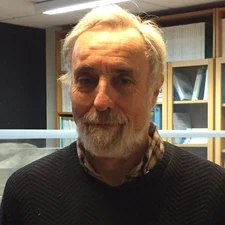Yves Langevin

The 2018 Runcorn-Florensky Medal is awarded to Yves Langevin for his excellent contributions to a number of space missions in which he has played a decisive role from the very beginning.
Yves Langevin is an outstanding and internationally recognised planetary scientist who has made major contributions to the understanding of the processes responsible for the evolution of solar system bodies. Langevin has served on a substantial number of space missions, including as an associate scientist on SMART-1, co-investigator on Vega, Phobos, Mars 96, Cassini-Huygens, Stardust, Dawn, Mars Science Laboratory, Mars Express, Venus Express, and Philae, co-principal investigator on Rosetta and Bepi-Colombo, and principal investigator on JUICE, the Jupiter Icy Moons Explorer.
Langevin started his remarkable career with pioneering modelling of the surface evolution of the Moon caused by impacts and particle irradiation. Among his most recent findings are the discovery of sulphates on Mars and the characterisation of the seasonal evolution of frosts and ices in the Mars polar regions, discovered via the OMEGA hyperspectral imager on-board the ESA Mars Express mission. These observations have increased our knowledge about the climate, evolution and the potential habitability of the red planet. Even more recently, Langevin has published the first analysis of dust particles collected by the COSIMA (Cometary Secondary Ion Mass Analyser) mass spectrometer in the coma of comet 67P/Churyumov Gerasimenko, on-board ESA Rosetta.
Langevin has uniquely contributed to space missions at all stages, from their definition, design and selection, to the development of their payload, the data processing (with customised compression algorithms) and their archiving. His scientific interpretation of the acquired data has been published in 230 reviewed articles. In addition, he has supervised 8 PhD students.
As Chairman of the ESA’s Solar System Working Group, Langevin contributed to promote several of the key solar system space missions, present and future, with his visionary and inspirational views, for the immense benefit of the scientific community. An essential contribution of Langevin has been to propose the most efficient spacecraft trajectories, optimising the science return of most missions in a spectacular fashion. Examples are numerous, all exhibiting his extraordinary merging of knowledge and creativeness. Some example include the choice of a specific Mars Express drifting orbit thereby enabling optimised sharing by the imaging remote sensing, the radar night coverage and the solar/stellar occultation, the identification of the new targets (comet and asteroids) for Rosetta, following the launch delay in 2003, the innovative SMART-1 lunar orbit insertion, the complex navigation of JUICE in the Jovian system with multiple moons flybys and at the end the Ganymede orbit insertion.
Few scientists have contributed to the development of the European space planetary sciences in such a profound and broad fashion. Langevin is undoubtedly deserving of the Runcorn–Florensky Medal.
